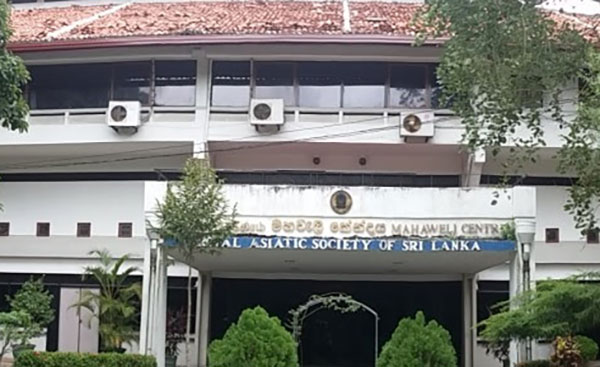By DR. P.G. Punchihewa
Royal Asiatic Society
The Island, 5.11.2021
In the 1950s, when we were undergraduates of the University of Ceylon, the then professor of history, a foreigner, used to say, “I say there are no libraries in Ceylon. There are two bad libraries in Colombo. One is the Public Library.” I cannot remember the other bad library to which he referred.
But he being the professor of history, would have known that there was a tradition of maintaining a library called ‘pot gul’ in every temple, reminding us of the pothgul viharaya in Polonnaruwa, with the great Parakramabahu holding an ola book in both hands. Our professor was probably lamenting the loss of a tradition.
The Royal Asiatic Society (RAS) was inaugurated in 1845, by a well-intended group of Englishmen. Justice Stark had been the first President of the Society. It seems there had been an educated, scholarly and elite group of Englishmen who had come to know of the glorious past of the island and wished to take meaningful steps to study, record and preserve the heritage of the island in contrast to Viscount Torrington who assumed duties as Governor of the island in 1847 and was the cause for the 1848 rebellion.
The object of the Society was to institute and promote inquiries into the history, religions, language, literature, arts, sciences, and social conditions of the peoples of the Island and connected cultures.
By 1852 the library had been set up and had 250 books at the beginning. The number had increased to 7564 by 1995. Today the collection stands at 12,500. The library is the main asset of the society. The aim is to keep the collection within the boundaries of the objectives of the founders. As such, it remains a small, yet qualitative, library.
It has a reference and a lending section. The reference section includes a rare collection, some of which go back to the 19th Century. And includes some ola leaf books and manuscripts. The lending section is open to members.
The library has been enriched by donations of personal collections of very valuable books by eminent scholars, among whom were Dr. P.R Anthonis, C. A. Lorenz, Mc Alpine, R.C. de S. Manukulasuriya, Dr. Lorna Deveraja, Sinha Basnayaka, Bandu de Silva, Kamalika Pieris, Dr. Hema Gunathilake and D.T. Devendra.
The Journal of the society is the main media through which the society takes research findings to the public. The early contributors to the journal were mostly British and amongst them were some of the eminent members of the Ceylon Civil Service like H.C.P. Bell, the first Commissioner of Archaeology, and H.W. Codrington. Over the years, more and more Sri Lankans came forth to present papers and publish them in the journal. There were such luminaries as E.M. de Z. Wickremasinghe, Sir Paul E. Pieris, E.L. Brohier, Prof S. Paranvitana, Dr. C.E. Godakumbura, Simon Casichetty, Dr. P.E.P. Deraniyagala, Sir Ponnambalam Arunachalam and many others. Today, some of the contributors hail from India.
Membership of the Society is open to those who possess a first degree. Also available are associate membership and student membership to assist students particularly from universities. Royal Asiatic Society is managed by a Council elected by its membership at its annual general meeting.
The Royal Asiatic Society with its library is a national asset. It is a fount and a repository of knowledge where one can spend hours, in its quiet environment, browsing through the revelations of our revered seniors. R.A.S provides a platform to present academic papers. Regular monthly meetings on subjects of interest open to the public, lead to professional discussions and are an occasion to meet intellectuals.
It is up to the intelligentsia, the educated public and the university population to make the best use of the Royal Asiatic Society.

